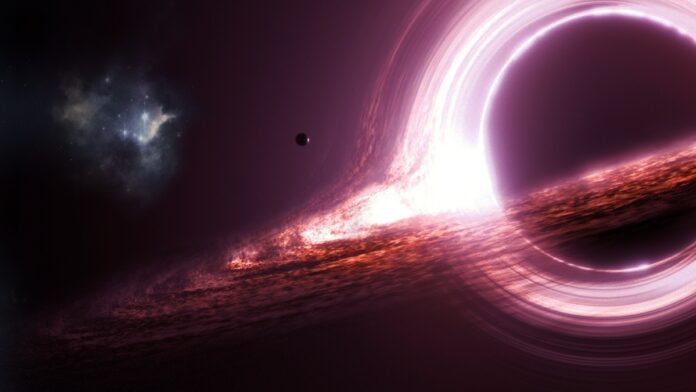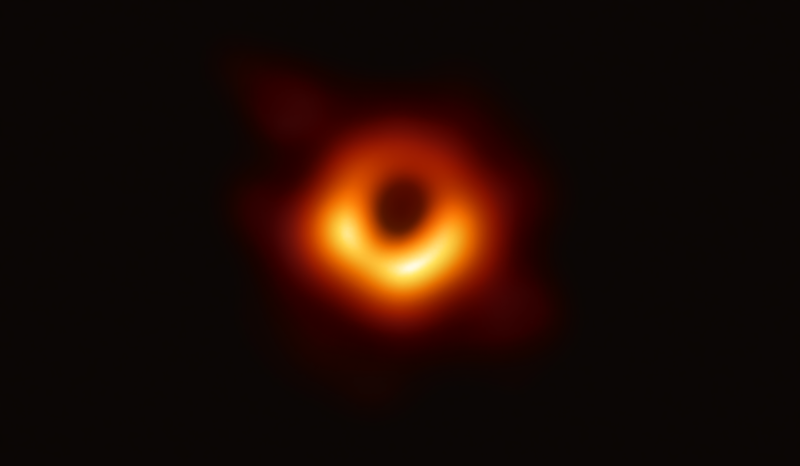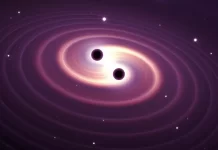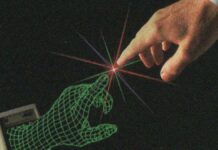
In 1916 Albert Einstein predicted the existence of black holes with his general theory of relativity. After that, in 1967, American astronomer John Wheeler coined the term “black hole.” Finally, after decades of only knowing black holes as theoretical, the first real black hole was discovered in 1971. The Event Horizon Telescope (EHT) collaboration then revealed the first photograph of a black hole in 2019. The EHT found the black hole in the heart of galaxy M87 while studying the event horizon, the region beyond which nothing can escape from a black hole. The artistic illustration depicts the sharp loss of photons.
Now that scientists know what a black hole looks like, it opens up a whole new route of research in black holes. Learn more in this article about what black holes are. What are the types of black holes? And more facts about black holes.
Contents
What are Black Holes?
A black hole is a region of space where gravity is so strong that even light cannot escape. Because stuff has been compressed into a small space, gravity is compelling. This can occur when a star dies. People cannot perceive black holes because no light can escape. They are unnoticed. Space telescopes equipped with specialized equipment can aid in the discovery of black holes. Particular technologies can observe how stars close to black holes behave differently from other stars.
What do black holes look like?
The image of a black hole in M87 captured by the Event Horizon Telescope (published in 2019) was an incredible endeavor that required two years of research even after the photographs were taken. This is because the partnership of telescopes, which spans several observatories worldwide, generates an astonishing amount of data that is too huge to transport via the internet.
Researchers hope to picture other black holes in the future and compile a database of what the objects look like. The next target will likely be Sagittarius A, the black hole at the heart of our Milky Way galaxy. According to a 2019 study, Sagittarius A is intriguing since it is quieter than expected, which could be owing to magnetic fields suffocating its activity. In addition, another investigation that year discovered a cold gas halo surrounding Sagittarius A*, providing a unique insight into the environment surrounding a black hole.
What is the Size of Black Holes?
Black holes can be large or small in size. Scientists believe the tiniest black holes are as small as one atom. These black holes are small in size but have the mass of a massive mountain. The amount of matter, or “stuff,” in an item is defined as its mass. A “stellar” black hole is a different type of black hole. Its group might be up to 20 times that of the sun. There could be many star mass black holes in Earth’s galaxy. The Milky Way is the name given to Earth’s galaxy.
The giant black holes are referred to as “supermassive.” These black holes have masses more significant than a million suns added together. Scientists have discovered evidence that every giant galaxy has a supermassive black hole at its center. For example, Sagittarius A is the name given to the supermassive black hole at the center of the Milky Way galaxy. It has a mass of around 4 million suns and would fit in a vast ball large enough to accommodate a few million Earths.
What Causes Black Holes to Form?
Primordial black holes are theorized to have originated shortly after the great bang in the early universe. Stellar black holes are created when a giant star’s core collapses on itself. This collapse also results in a supernova, or exploding star, which sends a portion of the star into space. Scientists believe that supermassive black holes emerged at the same time as the galaxy in which they reside. The size of the supermassive black hole is proportional to the size and mass of the universe in which it exists.
How Do Scientists Know There Are Black Holes If They Are “Black”?
Because of the enormous gravity that pulls all light into the black hole’s center, a black hole cannot be seen. On the other hand, scientists can observe the effects of its high gravity on the stars and gases that orbit it. If a star is orbiting a specific point in space, scientists can monitor its velocity to determine whether or not it is orbiting a black hole. High-energy light is created when a black hole and a star orbit near. Scientific devices can detect this high-energy light.
The gravity of a black hole can sometimes be powerful enough to draw out the star’s outer gases and form an accretion disc around itself. As the gas from the accretion disc spirals into the black hole, it warms up to extremely high temperatures and emits X-ray photons in all directions. NASA telescopes measure X-ray light. Astronomers utilize this data to understand more about the characteristics of a black hole.
Can a Black Hole Destroy the Earth?
Black holes do not float around the universe, devouring universes at random. Like all other objects in space, they obey the laws of gravity. A black hole’s orbit would have to be close to the solar system to affect Earth, which seems unlikely. The Earth would not fall into a black hole with the same mass as the sun if it were to replace the solar. A black hole with the same mass as the sun would have the same gravitational pull as the sun. The planets would continue to orbit the black hole as they do now.
Will the Sun Ever Become a Black Hole?
The sun lacks the mass to collapse into a black hole. When the sun reaches the end of its existence, it will become a giant red star in billions of years. When it has depleted its fuel, it will eject its outer layers, transforming into a blazing ring of gas known as a planetary nebula. Finally, the sun will be reduced to the size of a cooling white dwarf star.
Sources
- May, S. (2019, November 29). What Is a Black Hole? NASA. Retrieved January 29, 2022.
- Wald, Robert M. (1984). General Relativity. University of Chicago Press. ISBN 978-0-226-87033-5.
FACT CHECK: We strive for accuracy and fairness. But if you see something that doesn’t look right, please Contact us.
DISCLOSURE: This Article may contain affiliate links and Sponsored ads, to know more please read our Privacy Policy.
Stay Updated: Follow our WhatsApp Channel and Telegram Channel.












